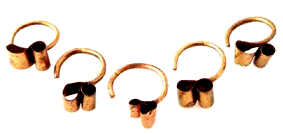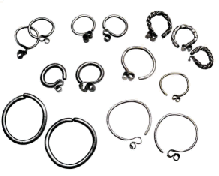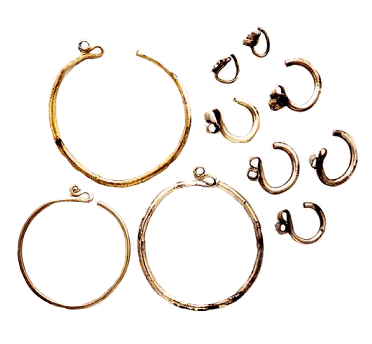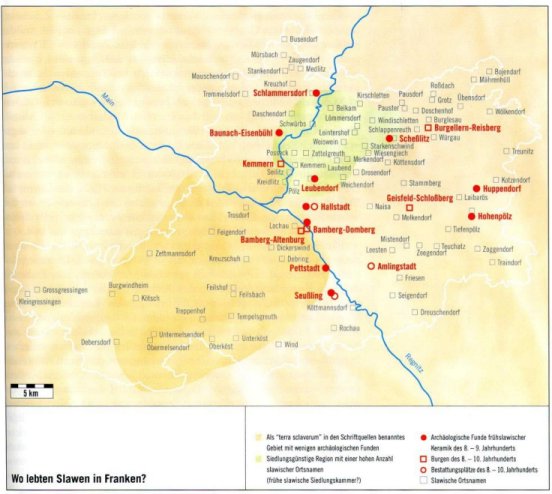History /
Ancient Polish History thread [180]
Rome was greater, USA is greater, ancient Greece was greater, ancient Persia was greater,
not truth
Great Moravia was greater and Sarmatia Europae and Sarmatia Asiatica and.... and Polish-Lithuanian Comonwelth and Poland under Wladislaw Warnenchyk or Boleslav The Brave when lands of Racowie were also part of Great Poland... and Russians in time of resistance to Mongols in time of great hero Muromec were also greater... and Boii, Scordisc, Dacian and Trachian tribal alliances were also greater then all what was Rome or Greece or Persia or any other foreign construction
So, let us SURRENDER LIFE TO SLAVIA ETERNA, SOUL TO GOD, AND HONOUR TO NOBODY!
Poles are children of Danubian cultural area which definitely forming after two branches of Proto Slavs faced each others on vast territory from Balkan (where European journey of ancients started after Ice Age was finished) to Balaton and Baltic, from South Eastern Europe to the Central, Western and Eastern Europe, Eurasia, Asia and even Near East and Anatolia.
Spot movement of Proto Slavic branch which moved to Europe (Balkan) via Anatolia. Those were first whites on European soil, real representatives of that what would be later known as Western culture,... that was people which initiated craetion of Danubian cultural area. Some time later other branch of Proto Slavs, moving arround Caspian and Black sees via Eurasia coming into realm of first branch and two branches mixing and joining again (after some period of separate movements). First branch was more agricultural and other branch was more nomadic, in general it is Sarmatian and Scythian story.
more details in case with Proto Slavic branch which moved into Europe (Balkan) via Anatolia after Ice Age was finished...
Vinca - Centre of the Neolithic culture of the Danubian regionBelgrade, 1990
Nikola Tasic, Dragoslav Srejovic, Bratislav Stojanovic
Vinca and its CultureVinca is the largest and most comprehensively excavated Neolithic settlement in Europe. It was a metropolis with a flourishing culture, at the place where across the valleys of the Bolecica and Danube Rivers a joyful relief of Sumadija meets with the plain of Banat. Between 4500 and 3500 BC it was a major prehistoric settlement. Thus, Vinca is a notion signifying nowadays the peak of Neolithic farming settled culture in Europe.
Antropomorphic figurine from VincaMiniature altar from VincaTisza culture vessel from VincaAvailable archaeological material implies that the first colonists of Vinca have had good neighbourly relations both with the communities in the Pannonian basin and southern part of the Balkan Peninsula.
more on specific cultural achievements of Proto Slavic branch that populated Europe (Balkan) via Anatolia / original foundators of Western culture /
early Polish ancestors ...
Lepenski VirIntroductiondonsmaps.com/lepenski.html

Lepenski Vir as it was 8 000 years ago, when it was a thriving community on a restricted area on the right bank of the Danube River, in the middle of the Djerdap, the Iron Gates Gorge.
Note the fish trap, baskets of fish, the trapezoidal house under construction, the stone hearth, the aurochs and deer, the water birds which have been caught, the spears and bow and arrow, the dog/wolf, the making of a sculpture, and the clothes.Lepenski Vir is exceptional and distinct not only because of still unrevealed evidence from the cultural history of the Danubian lands but also on account of the limitations inherent in the standard archaeological nomenclature, above all in the classic and generally accepted division of the early prehistory of Europe into Early (Palaeolithic), Middle (Mesolithic) and Late Stone Age (Neolithic).
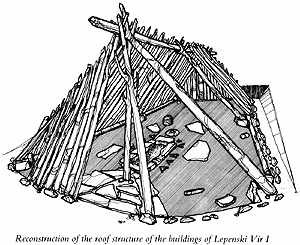
As will be seen later, the newly revealed culture of Lepenski Vir contains certain features which could equally be appraised as Palaeolithic (art, religion), Mesolithic (economy) or Neolithic (permanent settlement). Looked at collectively, however, they represent a new phase in the early prehistory of the Danube Basin, a distinct stage of culture which emerged over centuries and without which it would not be possible to accept the two most significant advances of the 'Neolithic Revolution' that lay ahead: agriculture and stockbreeding.
as we can see from this quotation... there was coexistance between Vinca and neighbourly cultural areas... some kind of cultural exchange...
Available archaeological material implies that the first colonists of Vinca have had good neighbourly relations both with the communities in the Pannonian basin and southern part of the Balkan Peninsula.
trypillia.com/img/museum/settlement/oldeurope-s.gif
compare anciant figurines from territory of today`s Serbia and today`s Ukraine... there is obvious chronological and cultural connection and continuity...
Trypillian Civilization in the prehistory of Europe5,508 - 2,750 BC
trypillia.com/museum/index.shtml
trypillia.com/img/museum/ppl/p09.jpg]figurine2
trypillia.com/img/museum/sacred/s05.jpg]figurine3
trypillia.com/img/museum/crafts/zoo.jpg]fig 5
trypillia.com/img/museum/ppl/p04-s.jpg]fig 4
trypillia.com/img/museum/ppl/p03.gif]fig 6
speaking of expansion of Danubian culture we must underline next quotation >>>
Danubian I peoples cleared forests and cultivated fertile loess soils from the Balkans to the Low Countries and the Paris Basin.
Danubian cultureen.wikipedia.org/wiki/Danubian_culture
Yes, our ancestors simple cleared forests along the river banks in all dirrections after expanded from Balkan, in time when warmer climate provided sustain conditions for movement of population to the more northern and western territories.
Linear Pottery cultureen.wikipedia.org/wiki/Linear_Pottery_culture
The Linear Pottery culture is a major archaeological horizon of the European Neolithic, flourishing ca. 5500-4500 BC. The heaviest concentrations are on the middle Danube, the upper and middle Elbe, and the upper and middle Rhine. The culture represents a major impulse if not the advent of agriculture into this part of the world. The pottery after which it was named consists of simple cups, bowls, vases and jugs, without handles, but in a later phase with lugs or pierced lugs, bases and necks. They were obviously designed as kitchen dishes, or for the immediate or local transport of food and liquids.
 Map of European Neolithic at the apogee of Danubian expansion, c. 4500-4000 BC
Map of European Neolithic at the apogee of Danubian expansion, c. 4500-4000 BCInteresting to be mentioned here is Lusatian culture which was formed in Danubian cultural area in Central European zone...
Lusatian culture - (1300 BC-500 BC)
en.wikipedia.org/wiki/Lusatian_culture
Numerous Czech (Píć, Niederle, Ćervinka) and Polish (Majewski, Kostrzewski, Kozłowski) authors believed the Lusatians to be Proto-Slavs
Danubian people (Proto Slavs, to say Sarmatians) was bearer of agricultural revolution, from Balkan to the West, North and East of Europe to the Eurasia and even to the Ind River. Anciant stories desciribed in Rg Veda texts speaking exactly about expansion of Sarmatian and Scythian (Proto Slavic) influence. Achievements of ancient Slavs clearted path to the modern understanding of civilization.
A simplified map of the central European cultures, ca 1200 BC. The purple area is the Lusatian cultureThe economy was mainly based on arable agriculture, as is attested by numerous storage pits. Wheat (emmer) and six-row barley formed the basic crops, together with millet, rye and oats, peas, broad beans, lentils and gold of pleasure (Camelina sativa). Flax was grown, and remains of domesticated apples, pears and plums have been found. Cattle and pigs were the most important domestic animals, followed by sheep, goats, horses and dogs.
more on expansion of Danubian culture and people...
Corded Ware cultureen.wikipedia.org/wiki/Corded_Ware
Approximate extent of the Corded Ware horizon with adjacent 3rd millennium culturesThe Corded Ware people are mostly seen as ancestral to Proto-Balto-Slavic in its eastern regions, and to the Centum dialects (i.e. Proto-Germanic, Proto-Celtic and Proto-Italic) in the western parts.
Then, in one moment, Celtic (nomadic/warlike) culture was formed dirrectly from Danubian (Proto Slavic) cultural area...
Maps of Celtic distribution thru EuropeThe green area suggests a possible extent of (proto-Celtic) influence around 1000 BC. The yellow area shows the region of birth of the La Tène style. The orange area indicates an idea of the possible region of Celtic influence around 400 BC.
Celtsen.wikipedia.org/wiki/Celt
 The Celts in Europe, past and presentmap that clearly show how Celts originates from Danubian cultural area and people. Celts are children of Proto Slavic world or we can simple say that they were Slavs
The Celts in Europe, past and presentmap that clearly show how Celts originates from Danubian cultural area and people. Celts are children of Proto Slavic world or we can simple say that they were SlavsExpansion of nomadic Proto Slavs (also in general known as Scythians, Celts or Gouls) marked period of ultimate Slavic domination in Europe, Eurasia and Near East. But, those nomadic (in general) Slavs (Proto Slavs) suffered great pressure from the new arrived Semitic people in Europe. Newcomers arrived from Egypt and Arabic lands and clashed with Celts/Gouls (Proto Slavs) in today`s Spain, Italy, Balkan and Anatolia. On far East, darker people pushed Scythians (Sarmatians) far from the banks of Ind River. Ancient Slavic world was in decline and it was just the beggining of troubles. Final retreat of ancient Slavic world becoming absolute fact with formation of ancient Greak, Chartaginian, Roman and Moorish civilizations. With retreat of Proto Slavs (in history registered under different designations- Sarmatians, Scythians, Dacians, Celts, Trachians, Iliryans, Gouls, etc, etc) in fact beggining retreat of original native Western world in cultural, racial and linguistic sense.
That what is still Western still live only in today existing Slavic countries, which are under pressure from same oppresores and from the same reasons as were their ancestors in ancient times.
 PolishForums LIVE / Archives [3]
PolishForums LIVE / Archives [3]

